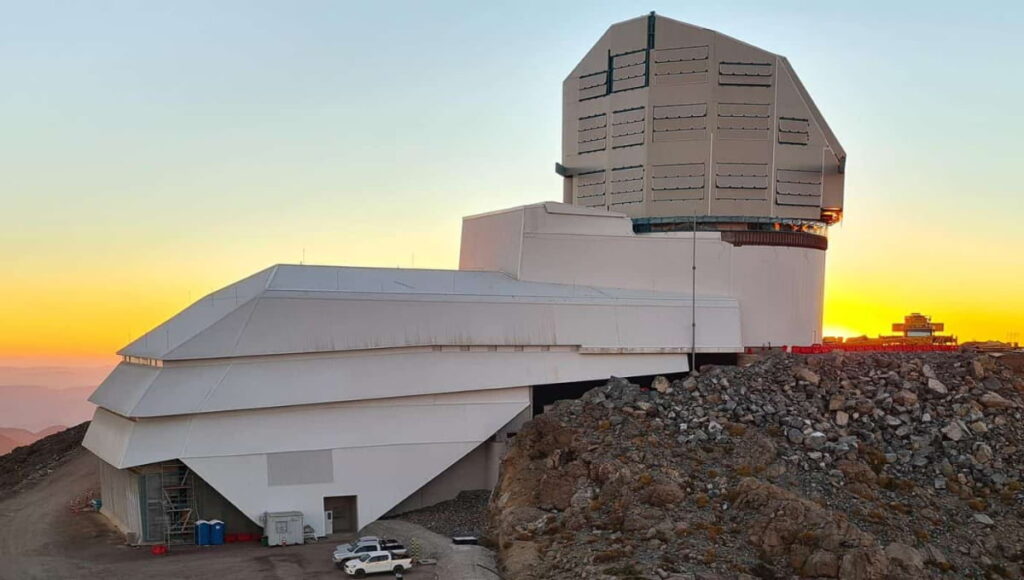Are you interested in space, which is full of mysteries? Then try imagining a camera so powerful that it can capture it with stunning detail over and over again. If it seems thrilling to you, this blog will surely excite you, as it will help you know everything about the world’s biggest camera, the LSST camera, an outstanding innovation ready to explore the secrets of the universe.
Unlike a typical space camera or telescope, it features the size of a small car and can take sharper images than anything we’ve seen before. This incredible device will be used at the Vera Rubin Observatory in Chile to study galaxies, track asteroids near Earth, and solve other big questions about the universe. Continue reading this blog to learn about the biggest space camera, where it is, what its benefits are, and more.
What is the LSST Camera?
The LSST or Legacy Survey of Space and Time Camera is the world’s biggest and most powerful digital camera, designed to capture sharp and highly detailed images of the sky in incredibly high resolution. To give you an idea of how powerful it is, a single image captured by the LSST camera can include around 20 billion galaxies. This camera will be used to capture images of the universe for the next decade so that scientists can build the most complete map of the universe we’ve ever seen. Here is what makes it special:
1. Biggest Camera Ever Built- The first fact that makes the LSST camera special is its huge size, nearly equal to a small car, weighing over 3,000 kg. It is the largest camera ever constructed and includes the largest optical lens (more than 1.5 m wide) ever used in astronomy.
2. Ultra-High Resolution- The biggest space camera can capture incredibly detailed images with a massive resolution of a 3.2 billion-gigapixel sensor. One image captured by this camera is so detailed that you’d need hundreds of ultra-HD TVs to show it at full resolution.
3. Wide Field of View- One of the most special features of the world’s biggest camera is that it can capture a field of view roughly the size of 40 full moons in a single shot. This means scientists can use it to scan large portions of the sky more quickly and effectively.
4. Advanced Light Filters- This camera will help astronomers better understand objects in different layers of the universe, as it uses six different color filters to study various types of light. Additionally, over the next ten years, it will capture the entire visible sky more than 800 times, as it is designed to capture a detailed image every 15 seconds.

World’s Biggest Camera Location & Operation
The world’s biggest space camera is housed at the Vera C. Rubin Observatory in Chile, situated on Cerro Pachón, a mountain in the Andes. The specific peak where this observatory is located is at a magnificent height of 8,799 feet. The base facility for this observatory is located in La Serena, nearly 100 km away. This remote location was chosen to capture images of clear skies, as this region has low light pollution and is one of the best spots on Earth for stargazing.
The Vera Rubin Observatory camera will be used to capture images of the southern sky every few nights for the next 10 years, creating a vast dataset for scientists to study, explore, and solve mysteries related to the universe. It will offer astronomers the opportunity to study space like never before, as it is expected to generate up to 30 TB of images per night. The data collected will be used to study dark energy and matter, detect transient events, and explore the solar system and the Milky Way.
First Images from the World’s Largest Camera
The LSST camera and its survey are designed to find answers to core questions in cosmology, like the nature of dark energy and the night sky changes. The data generated by this camera will be processed by supercomputers and made available to scientists worldwide for study purposes. Currently, this camera is still in the testing phase, but the first images from the world’s largest camera are very impressive.
The LSST first images are captured at the Vera C. Rubin Observatory in Chile, showing the night sky with sharp details. One of the first images captured the Trifid Nebula and the Lagoon Nebula glowing in bright pink against orange-red backdrops. The image itself was created from 678 exposures taken over just 7 hours, which shows the incredible speed of this camera. The image reveals details of these nebulae within our Milky Way that were not clearly visible before.
Another image captured by the biggest space camera shows the Virgo Cluster, a massive collection of galaxies nearly 100 billion times the size of the Milky Way. This single high-resolution image captured many sparkling stars in the front and many galaxies in the background. Scientists are aiming to use this camera to capture the night sky every 72 hours for the next decade to study changes in the position and appearance of galaxies and stars.

World’s Biggest Camera Launch Date
The world’s biggest space camera is now installed in the Rubin Observatory, and the first images from this camera were released on June 23, 2025. After capturing impressive first images, the LSST camera launch date for full survey operations is expected to begin later in 2025 or early 2026. The data from the survey will be used to solve many mysteries related to space by creating a detailed 3D movie of the universe by repeatedly imaging the entire southern sky.
Conclusion
The LSST camera is not only special because of its massive size; this digital camera will serve as a way to see the universe that no one has ever seen. Its ability to capture sharp and detailed pictures at high resolution repeatedly for the next decade will provide answers to many secrets related to the universe. From spotting objects that change over time to mapping galaxies and the solar system, this camera will help scientists understand deeper concepts of space. This incredible machine is one of the most innovative inventions in astronomy and is set to transform our views of the cosmos forever.
Also Read – How to Choose the Best Cash Back Credit Card: Key Criteria You Must Consider

